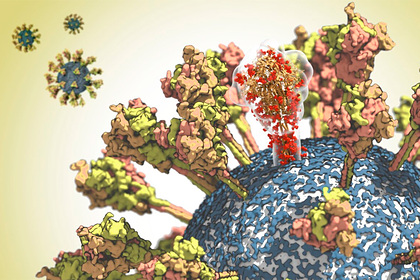
Scientists from the Max Planck Institutes in Germany have uncovered the structure of the various components of the SARS-CoV-2 coronavirus, which makes it possible to identify the pathogen's weaknesses and promising drugs for the treatment of COVID-19. This is reported in an article published in the journal Nature Communications. Research papers are briefly reported in a press release on Phys.org.
Experts have studied in detail the S-protein (“spike” protein), which is involved in the binding of coronavirus to the receptor of human cells ACE2, allowing the pathogen to fuse with the cell membrane and release its genetic material inside. Since the S-protein is located on the surface of the envelope of the virus, this makes it a convenient target for drugs and vaccines.
Scientists have found that the “stem” by which the S-protein is attached to the surface of the virus is very flexible. This mobility of the molecule is probably necessary in order to effectively bind to the receptor. Antibodies can recognize the upper portion of the protein, but other portions are protected from the immune system by sugar residues.
Another group of researchers focused on the mechanism of viral replication in an infected cell, which is provided by the enzyme RNA polymerase. It is known that the antiviral drug remdesivir can block the activity of the enzyme, however, as scientists have shown in a new work, in the case of coronavirus, this action is short-lived. Thus, remdesivir slows down the replication of the virus, but does not stop it completely.
Experts plan to find out how other known drugs interact with SARS-CoV-2 RNA in order to determine the most promising ones.

